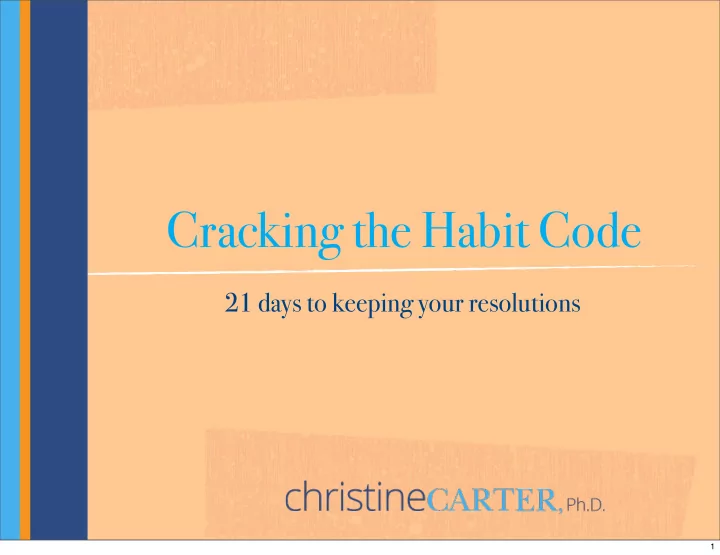

Cracking the Habit Code 21 days to keeping your resolutions 1
Day 2: Your Brain on Autopilot 2
2: Your brain on autopilot Why your resolution will be easy once it’s a habit Foundations of a habit: the anchor, the routine, and the reward Coaching you to build-a-habit 3
2: Your brain on autopilot Habits 101: When we try to do something new, it takes a lot of willpower, energy, and effort As we get tired or stressed, our efforts start to fail The built-in back-up plan: The basal ganglia, a primitive knob of tissue deep in your noggin, is your own personal auto-pilot Routines and habits allow us to access this energy-efficient part of our brain 4
2: Your brain on autopilot Habits are critical cornerstones for happiness, and most of us don’t even realize it. Routines can make us feel habitually good, or healthy, or productive--or they can make us feel habitually bad. Bad habits, or routines, can be changed into good ones. Neutral habits can be expanded to include our resolutions. Using willpower to change our lives is hard. Once habits are established, change comes effortlessly. 5
2: Your brain on autopilot A caveat: this doesn’t mean that we aren’t “mindful” Mindfulness: when we consciously pay attention to what experiencing in the present moment, without judging our thoughts and feelings as “good” or “bad” Mindfulness is a research-tested way to reduce stress Mindful attention to our breathing--the ultimate habit on auto-pilot--is the gold-standard meditation or mindfulness practice Ultimate goal for happiness: mindful while on auto-pilot 6
2: Your brain on autopilot A few notes about bad habits: Your brain can’t tell the difference between “good” habits and “bad” habits--it will cling to them both Once a habit is established, it is easier to alter the routine than it is to just quit it. To change a habit, keep the old anchor and reward, but insert a new routine. Habits are so powerful that they can “cause our brains to cling to them at the exclusion of all else, including common sense.” (Charles Duhigg) 7
2: Your brain on autopilot Three parts of a habit to craft today: 1. The ANCHOR : what action cues or triggers your habit? 2. The ROUTINE : what exactly do you do? 3. The REWARD : what makes you feel good? 8
2: Your brain on autopilot Daily practice: Creating Your Habit Start using your anchor, trigger, or cue -- DAILY if possible Pay attention to ORDER, and doing it the same each time Don’t forget to reward yourself! What will you come to crave? 9
Recommend
More recommend